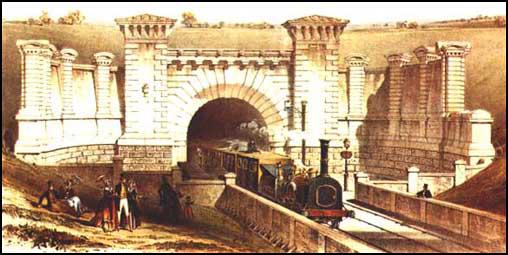London and Birmingham
After the success of the Liverpool & Manchester Railway, business people based in Birmingham began to consider the advantages of having a railway. Birmingham had seen rapid economic growth in the 1820s and by 1830 was sending one thousand tons of goods every week by canal to London.
It was decided to approach George Stephenson, the chief engineer of the Liverpool & Manchester line, about the possibility of building a railway between Birmingham and London. Stephenson advised them about the route that the railway should take but declined the offer of building the line. Instead, he recommended his son, Robert Stephenson, for the job.

The London & Birmingham Railway Company took Stephenson's advice and in 1833 Robert Stephenson was appointed chief engineer. Stephenson, who was paid £1,500 a year to build what was the first railway into London. Many people living on the proposed route were bitterly opposed to the railway. For example, the landowners of Northampton forced Stephenson to make the line pass some distance from their town. As a result of this change, Stephenson now had to build a 2,400 yard tunnel at Kilsby. Another major engineering problem the faced Stephenson was the Blisworth Cutting.
The 112 mile long London to Birmingham line took 20,000 men nearly five years to build. The total cost of building the railway was £5,500,000 (£50,000 a mile). The railway was opened in stages and finally completed on 17 September 1838. The line started at Birmingham's Curzon Street Station and finished at Euston Station in London. As the Grand Junction Railway had been finished in July 1837, the four major cities in England, London, Birmingham, Manchester and Liverpool were now linked together.
